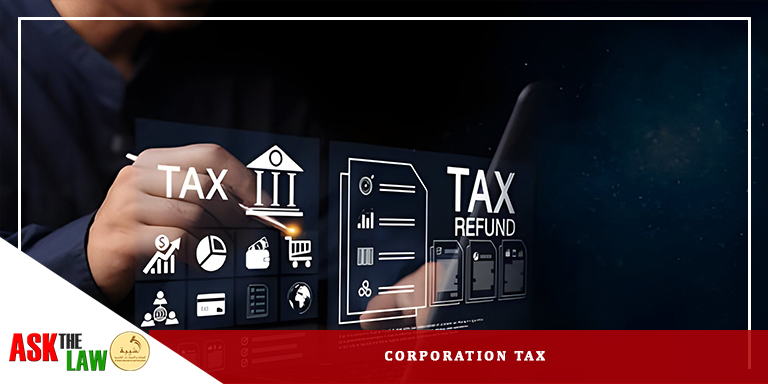
Understanding of Corporation Tax and Transfer Price Guide
May 6, 2024
The introduction of federal decree law on taxation of corporations and businesses (CT Law) has taken place in 2022. The Federal Tax Authority (FTA) has the power to issue guidance regarding the law. The Federal Decree-law was introduced to assist businesses and companies in navigating the Corporation tax. Nevertheless, there are many complexities attached to the corporate tax.
- One such publication is the Transfer Pricing Guide (TP Guide). It was released by the Federal Taxation Authority. It was introduced in October 2023. Transfer pricing is not legally binding.
Moreover, the TP Guide offers valuable insights into the application of transfer pricing and its provisions under the Corporation Taxation Law.
Objective and OECD Transfer Pricing Guidelines
Objective of introducing the TP Guide is to align the UAE’s standards with international norms. Therefore, the provisions are outlined according to the OECD Transfer Pricing Guidelines. The Transfer Pricing Guide underscores the significance of maintaining proper documentation. It is done to substantiate transfer pricing methods and decisions regarding it. Additionally, it outlines key principles. It includes the Arm’s Length Principle..
It portrays that the transaction took place and was conducted between independent entities. This principle applies to cross-border transactions. Added, it was also applied to domestic dealings. As per the TP guides, the related parties are defined broadly. It extends beyond mere ownership stakes. It is done to encompass significant influence exerted by one party over the other party.
Offers great scrutiny under transfer pricing rules
Some of their crucial factors like debt relationships and profit-sharing arrangements can indicate control. Furthermore, it triggers the essential disclosure regarding the obligations. It offers greater scrutiny under transfer pricing rules.
TP guide is introduced to ensure compliance. Added, companies and businesses are advised to follow a three-step approach. The 3 step approach is outlined in the TP Guide.
- Firstly, it is to identify the related parties and their transactions. Secondly, it involves the selection of appropriate transfer pricing methods and procedures. Last but not least, it includes determining arm’s length prices.
- Additionally, a thorough comparability analysis is very important to the cause. It will consider the critical factors. Some of the factors to consider are functions performed, assumed risks, and assets utilized in controlled transactions.
The Transfer Pricing Guide references five internationally recognized transfer pricing methods. It offers a great level of flexibility. Any of the 5 can be applied for alternative approaches if none of the standard methods are applicable. Moreover, the prime focus is on transactional-level analysis whenever possible. In some cases, the aggregated methods are also suitable in specific cases.
Documentation for TP Guide
The documentation requirement regarding the TP Guide mandates the preparation of contemporaneous transfer pricing documentation for all types of controlled transactions. This includes a Transfer Pricing disclosure form which needs to be submitted with tax returns. Further, the master and local files are also submitted for the qualification of multinational enterprises. Nevertheless, the detailed records must demonstrate the arm’s length nature of transactions in their capacity. This may be subject to Federal Taxation Authority scrutiny within the prescribed timeframes.

CBCR Reporting
Country-by-country reporting (CbCR) is another crucial facet of the TP guide. It obligates the multinational groups to meet certain revenue thresholds. It also enables the disclosure of global income allocation and the taxes paid.
Moreover, it also covers the economic indicators across various jurisdictions. Added, the financial transactions and intra-group services are also addressed under the flag. There is proper guidance provided on assessing the overall benefits. It also assesses the allocation of costs, and expenses and justifies any charges.
In the context of permanent establishments (PEs), the TP Guide advocates for a completely separate entity approach. This allows the Permanent establishments (PE) to be treated as independent entities for transfer pricing purposes.
On the other hand, the companies and businesses should provide accurate attributable profits and expenses to the permanent Establishments PE. They must follow functional analyses. It is done to ensure arm’s length pricing in all related party transactions.
The overall emphasis of the TP Guide is to maintain proper documentation. The burden of proof on taxable persons must be adequately organized in papers along with the support of their transfer pricing positions.
Well-Versed Lawyers for TP Laws and Taxation
The well-versed Lawyers have knowledge regarding corporation taxation and TP laws in the UAE. Their expertise can provide invaluable support in this matter. Besides, the lawyers ensure that all the businesses adhere to regulatory requirements in this domain. They also work on mitigating the risk factor attached to non-compliance. Their knowledge and experience enable the businesses to offer strategic advice benefiting them.
Nevertheless, a lawyer offers legal representation to businesses in tax disputes. The assistance regarding the documentation and paperwork is imperative to the cause. Ultimately, it safeguards the overall interests of their clients by promoting adherence to the law.
TP Guide is a practical tool for businesses. It helps them in navigating transfer pricing regulations under the CT Law. The main aim is alignment with international standards and emphasis on documentation is achieved via it. It is not only a way to ensure compliance but also offers a greater level of clarity. They offer guidance in a complex area of corporate taxation.
VISIT: NEW UAE CORPORATE TAX LAWS


